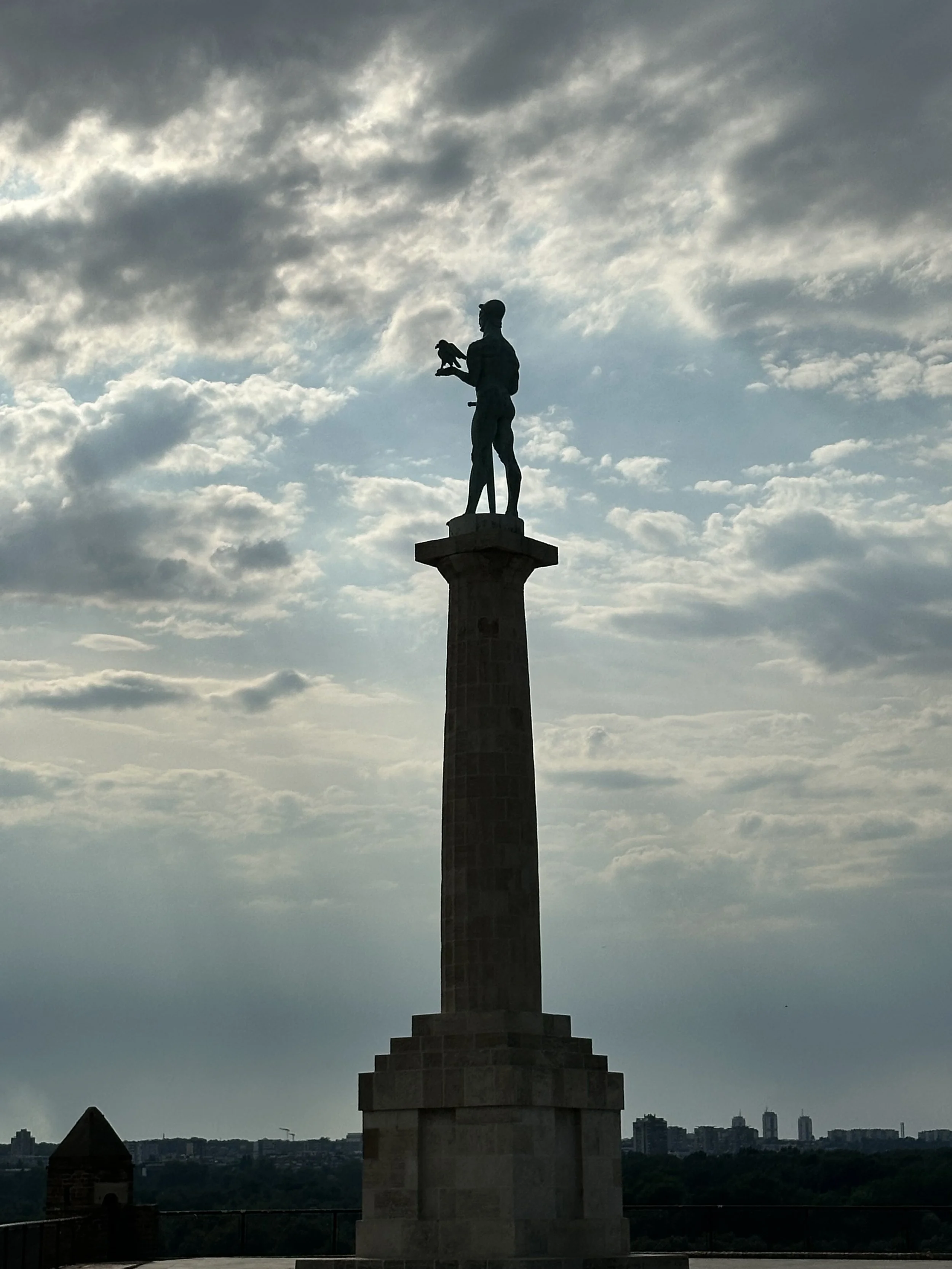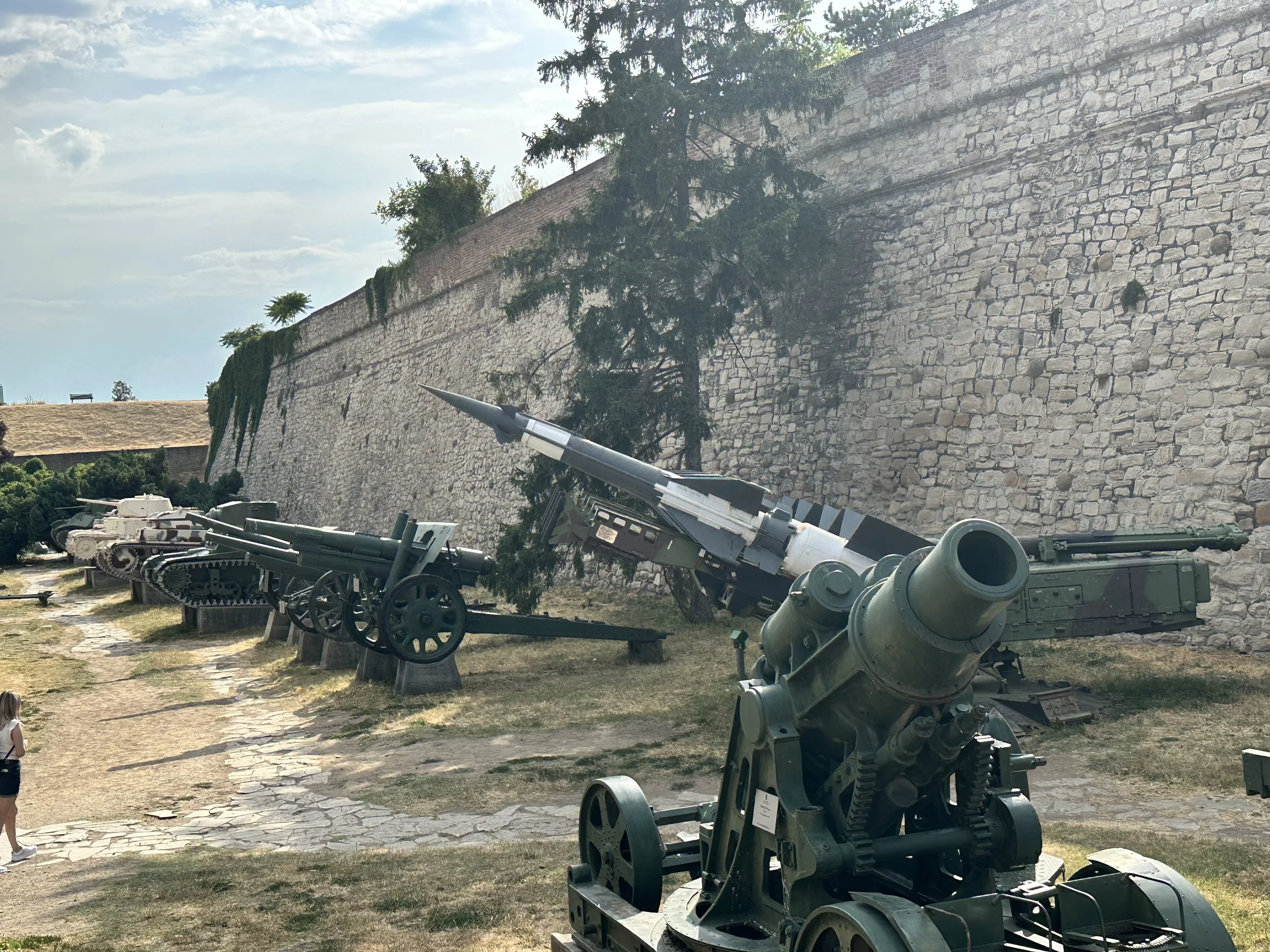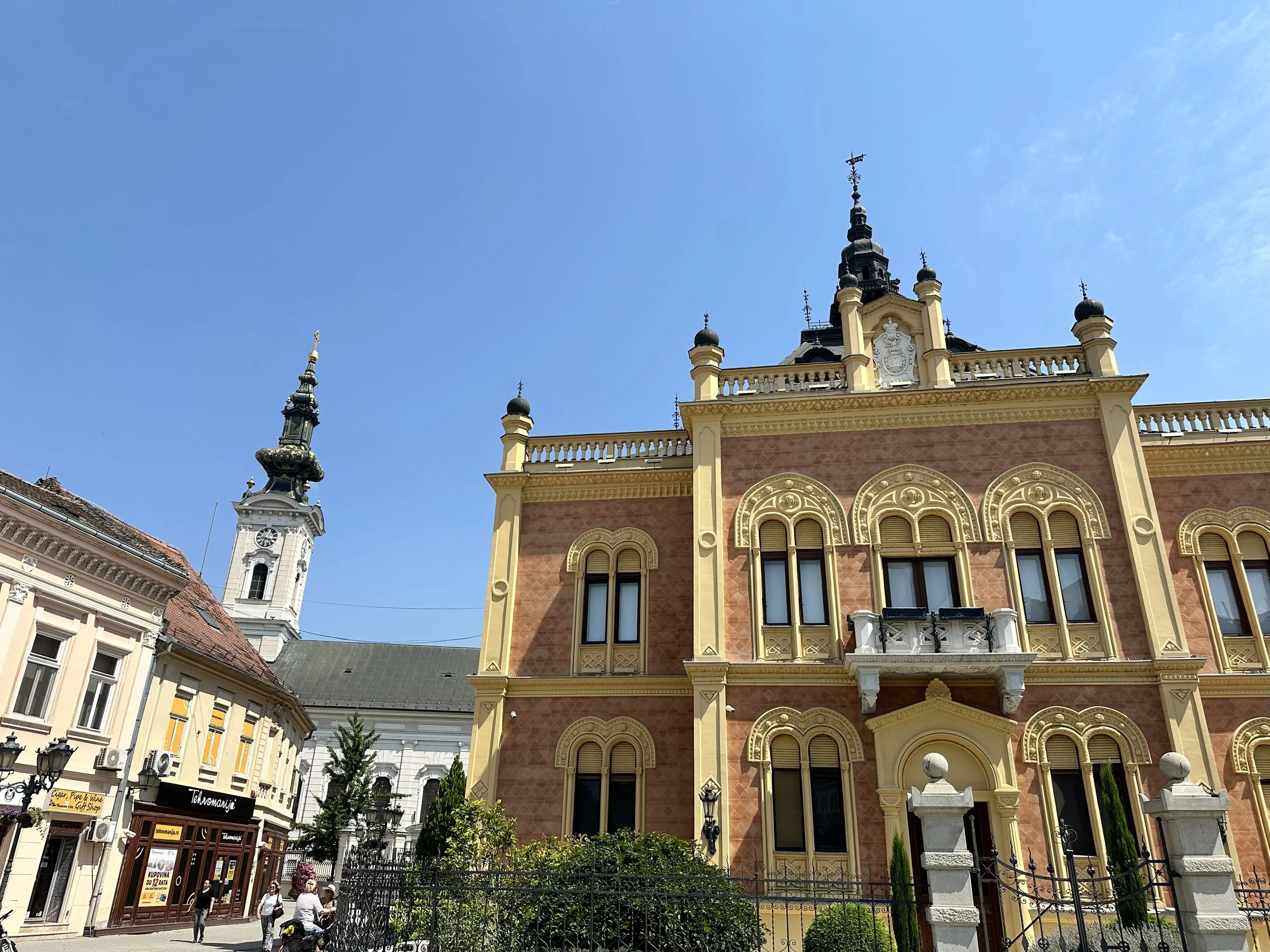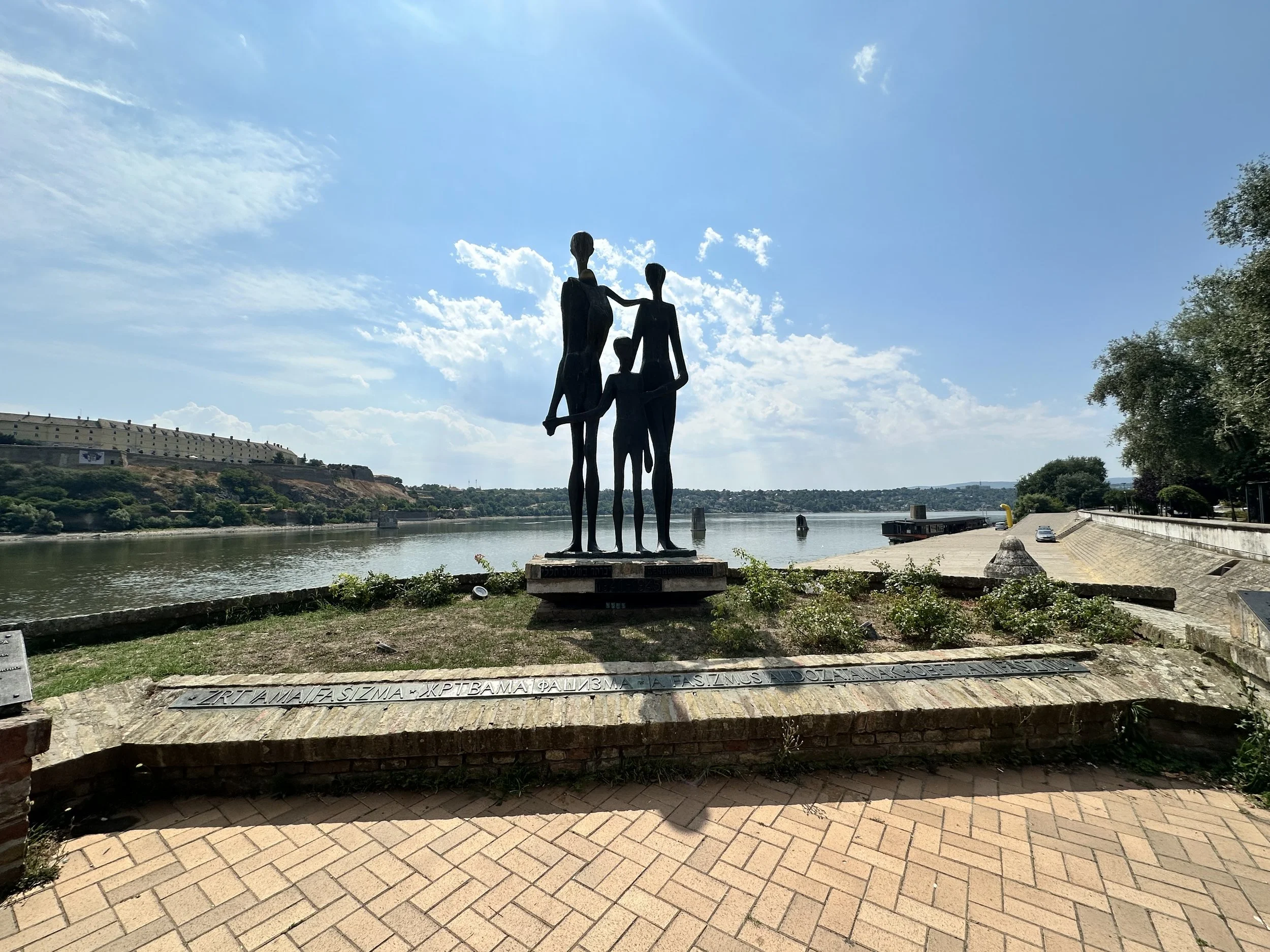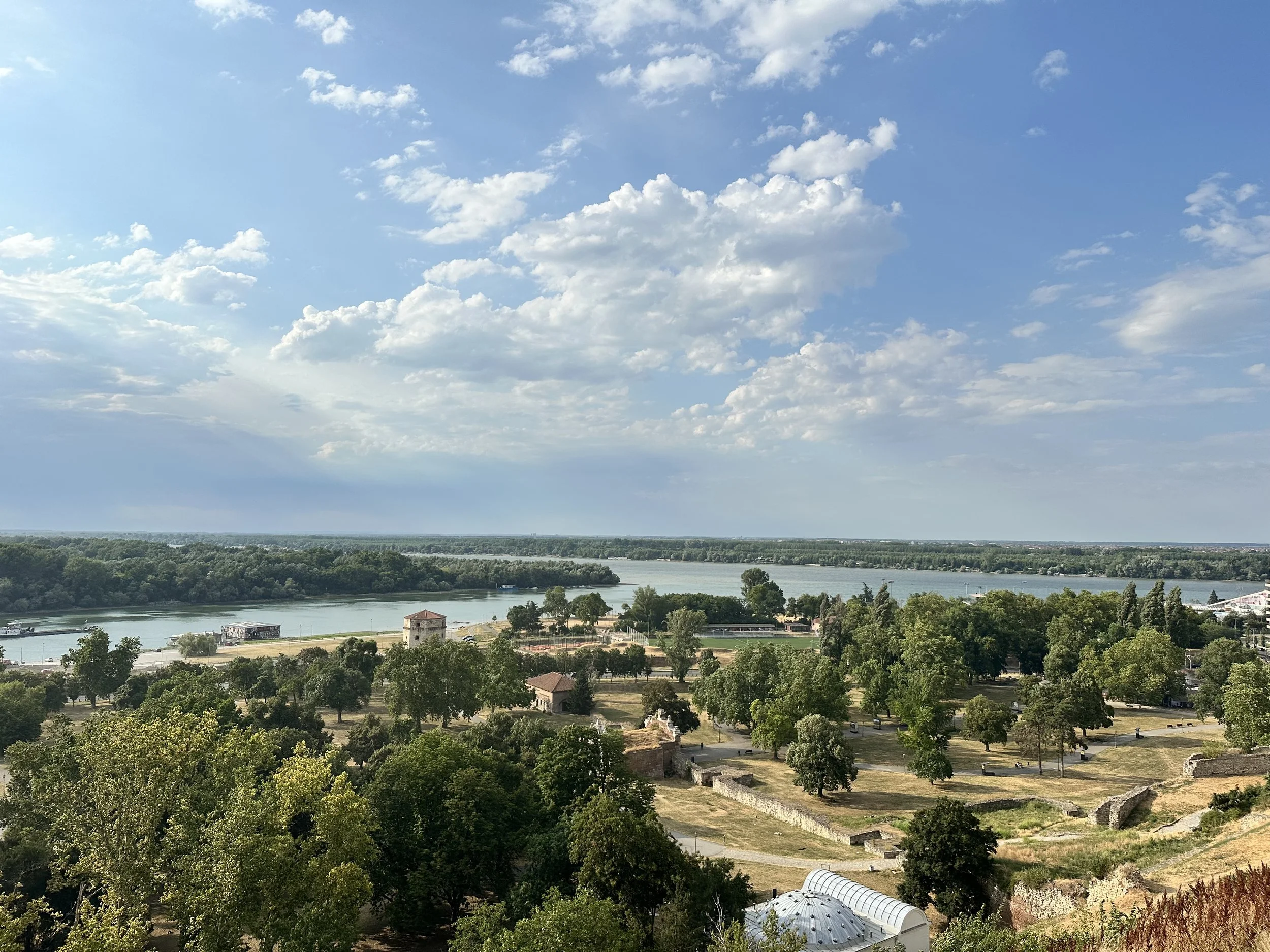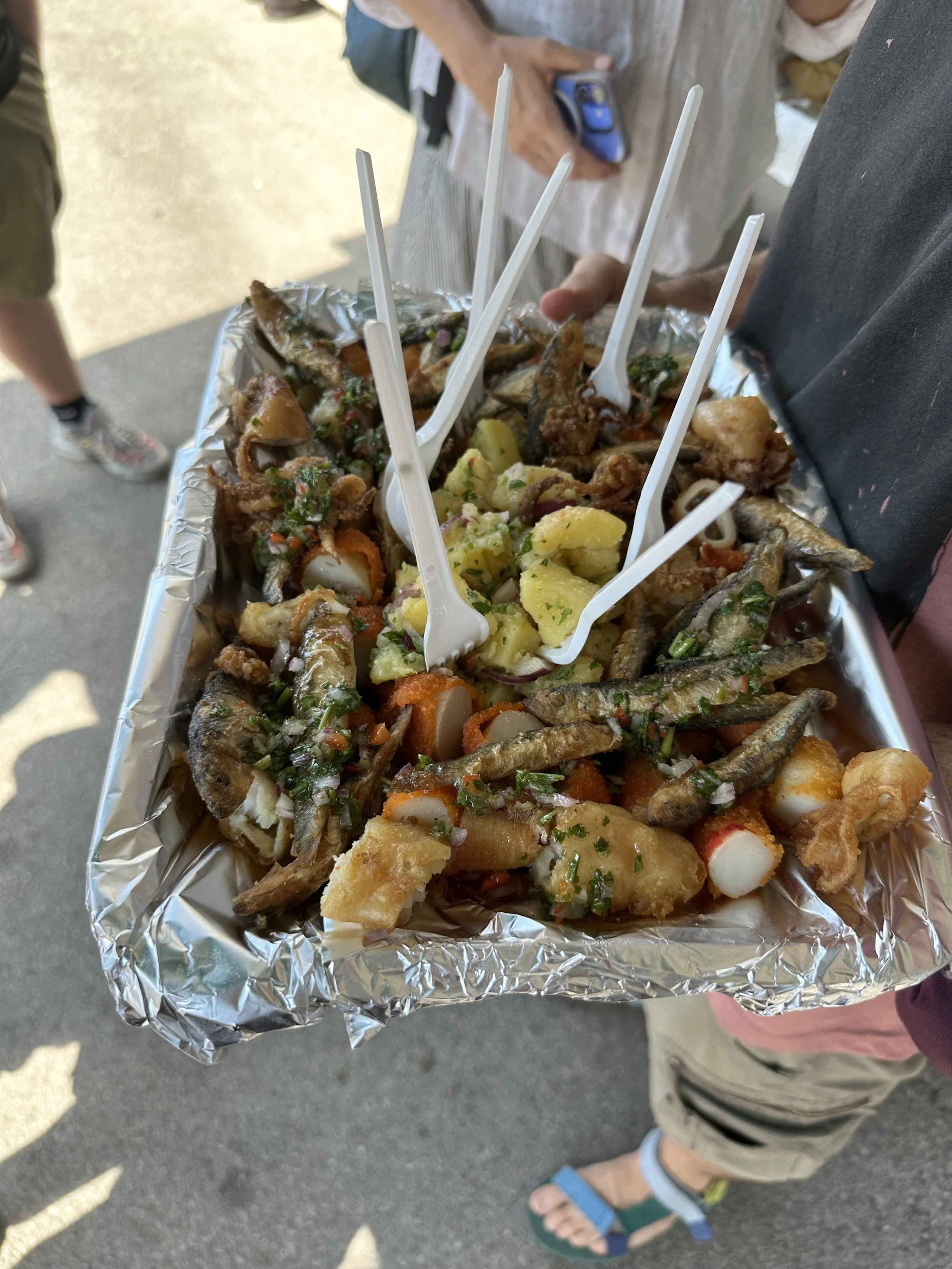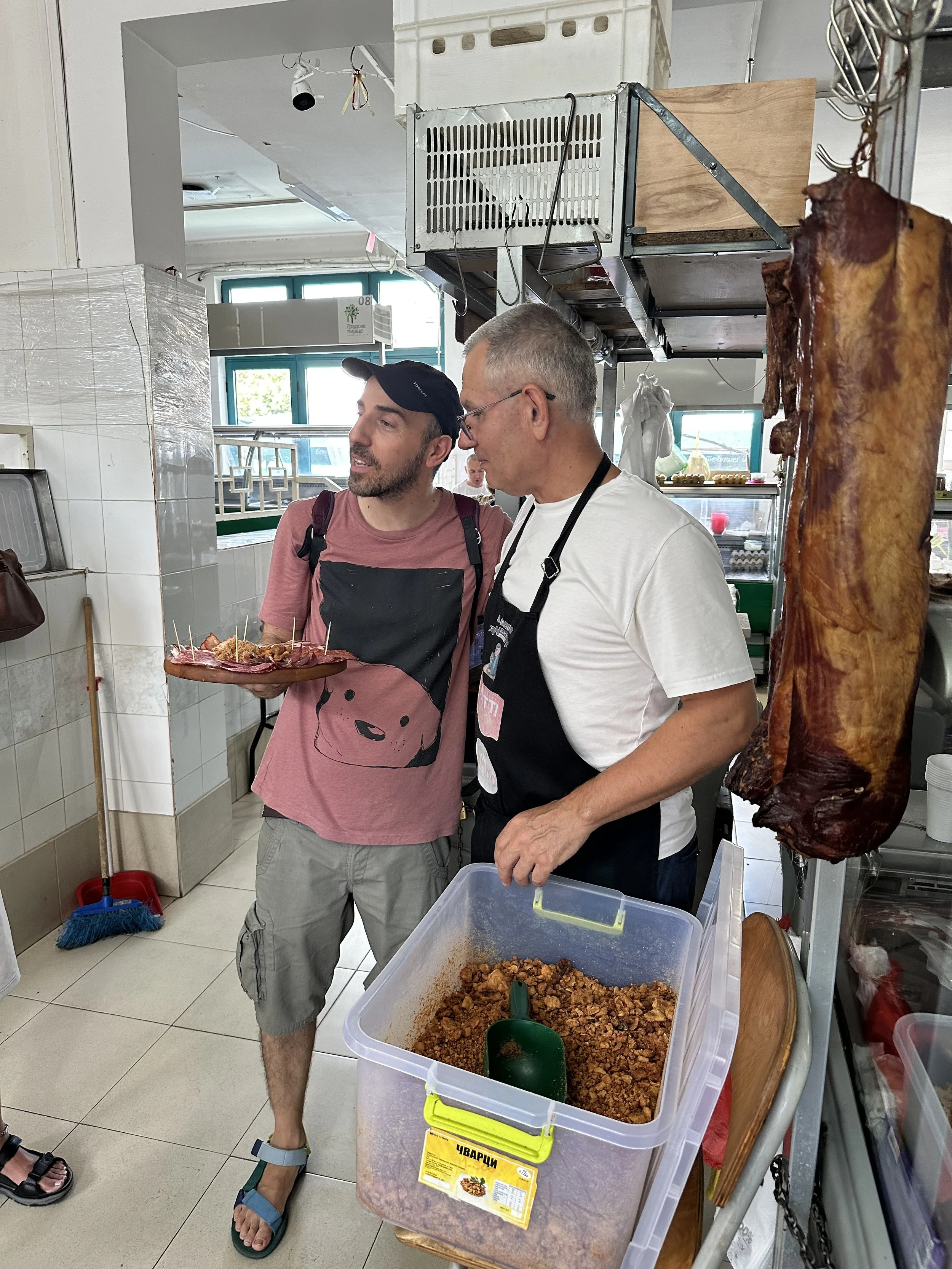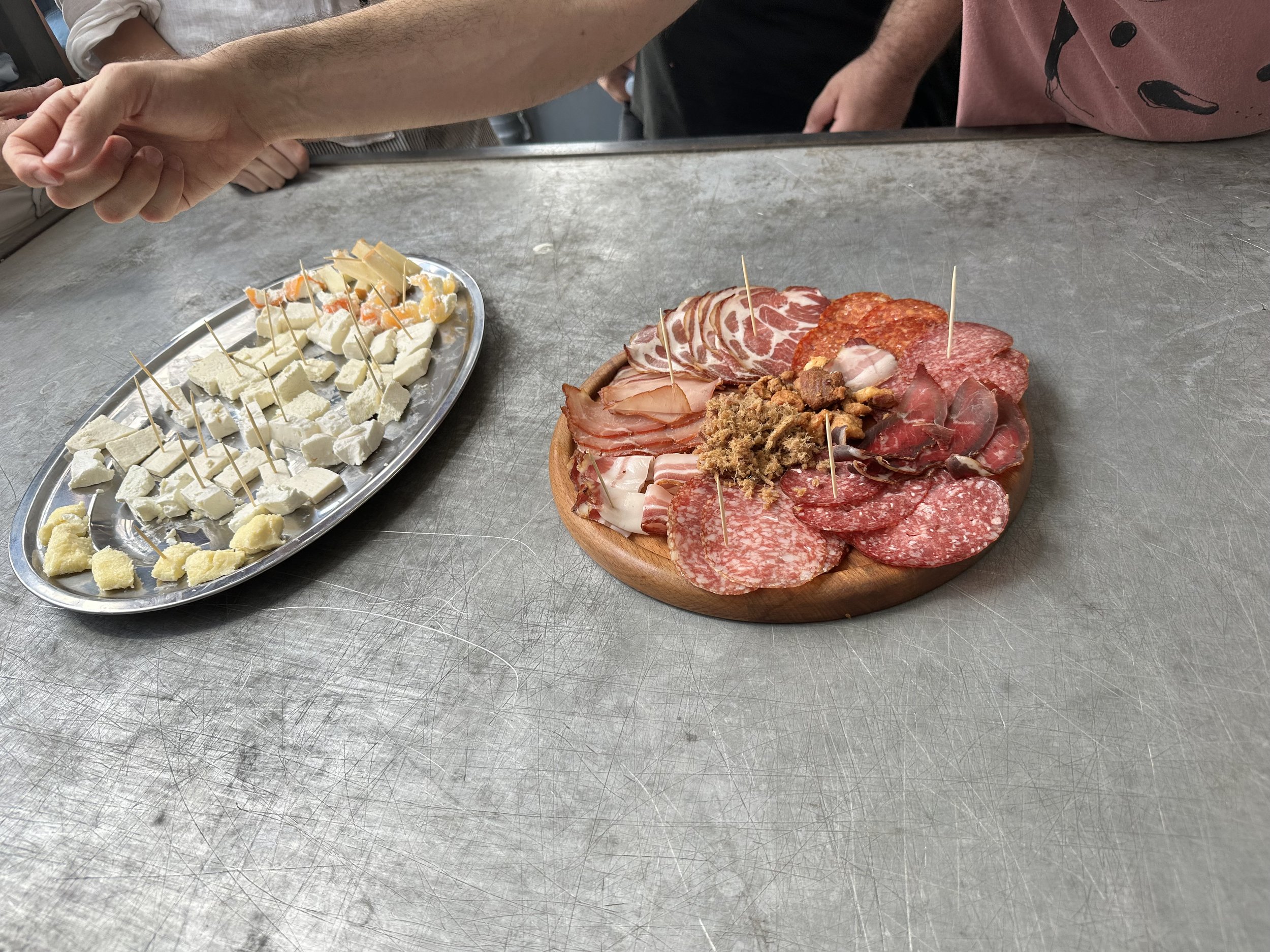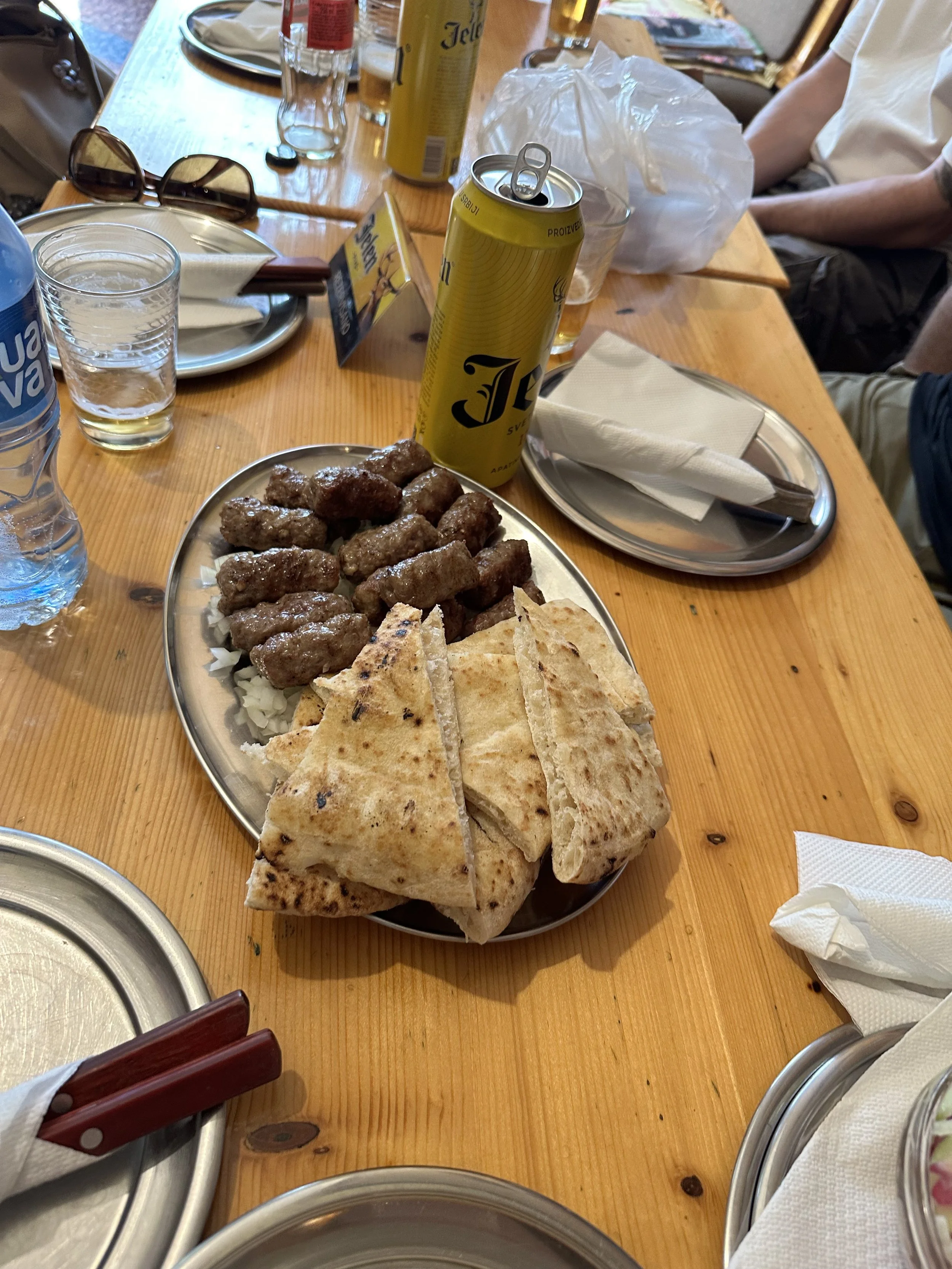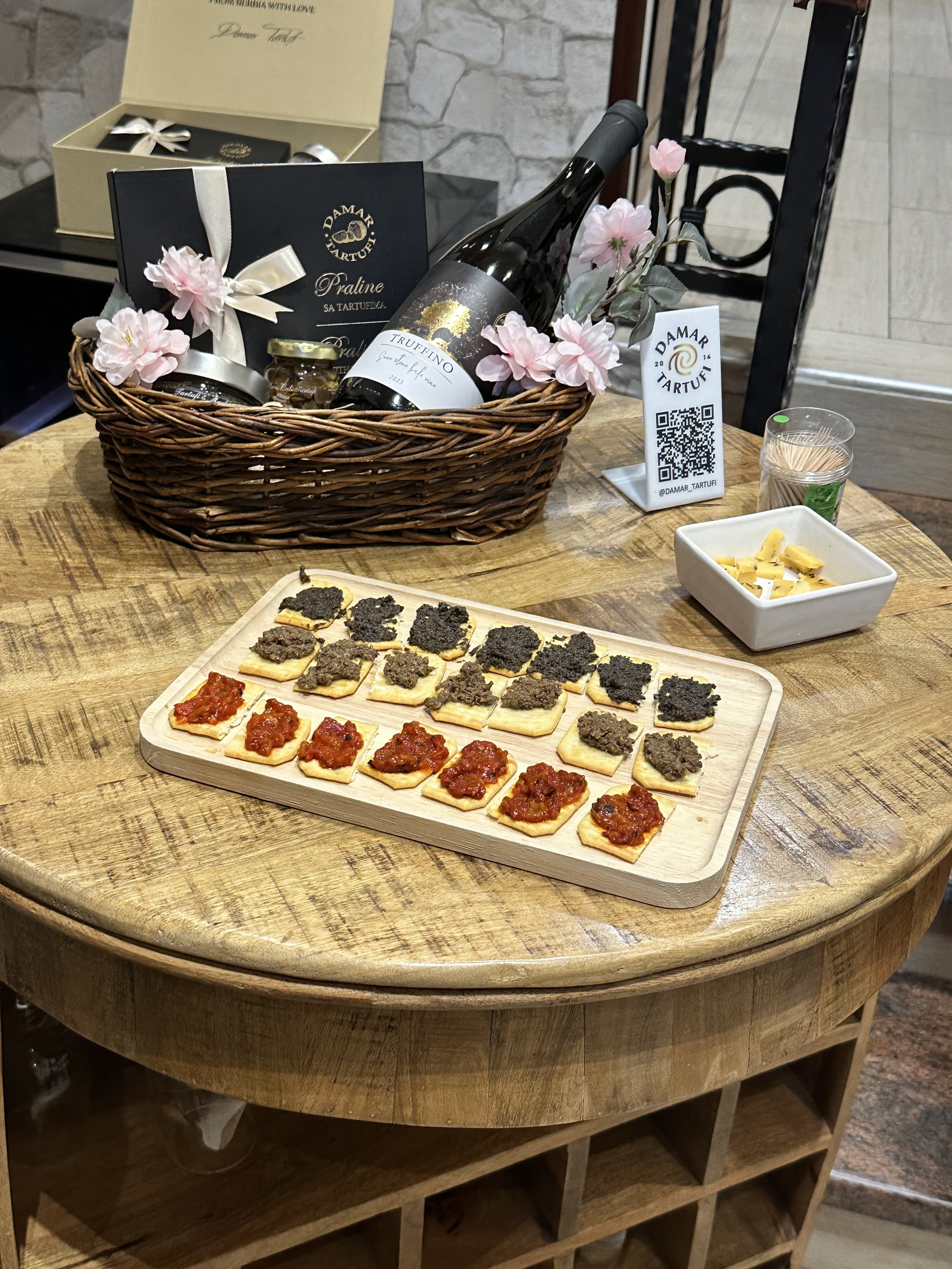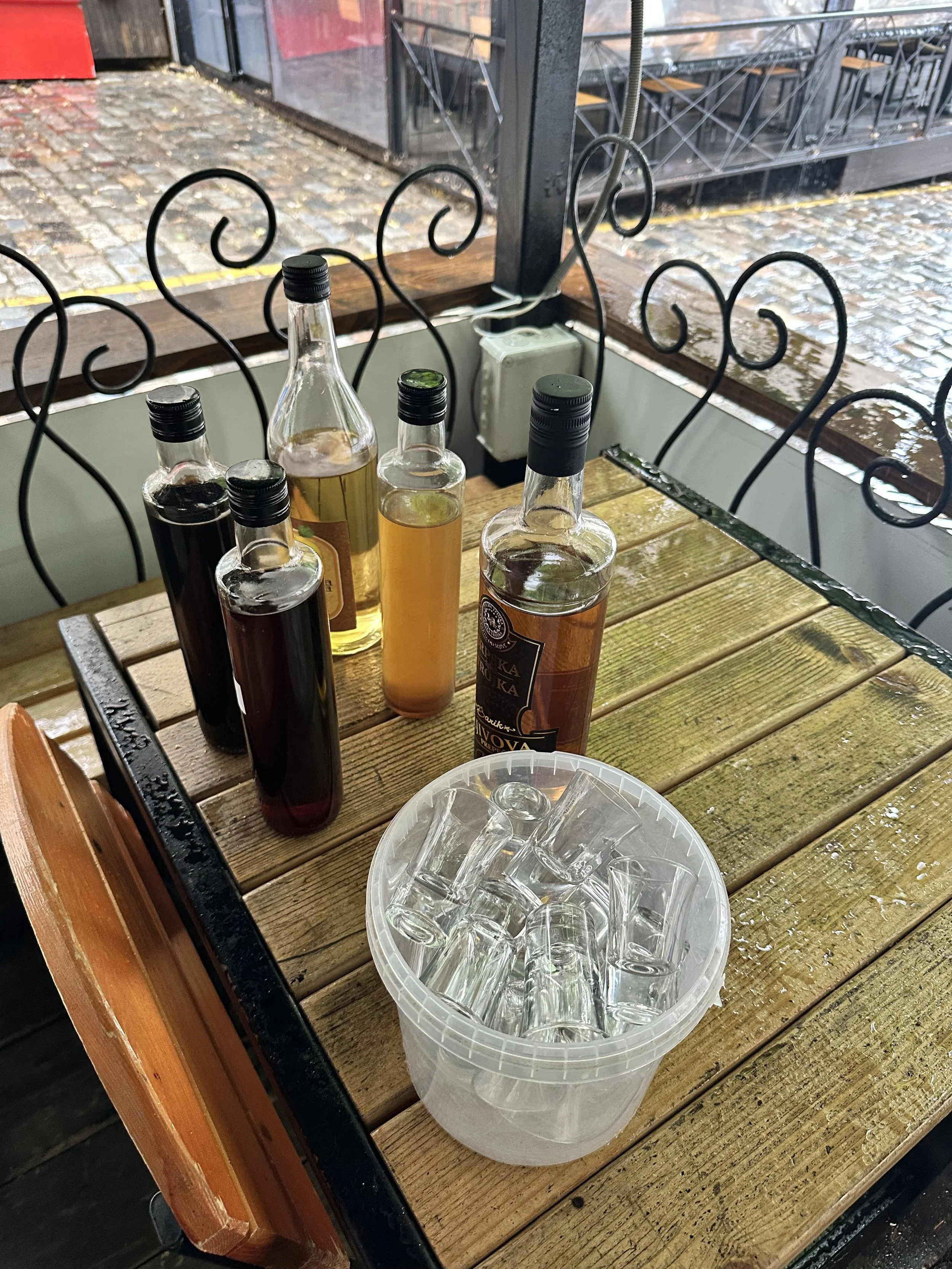Solo-ish Summer 2025 Days 44-46: Three Days in Serbia from Novi Sad to Belgrade
After saying goodbye to Budapest and meeting our new travel group, we boarded a public bus for a 5-hour ride south to Serbia. The drive included a lengthy border crossing—one of the joys of moving between the European Union and non-EU countries. But even that was part of the experience, and by early afternoon, we arrived in Novi Sad, Serbia’s second-largest city and the cultural heart of the Vojvodina province.
Day 1: Arrival in Novi Sad
Novi Sad greeted us with a mix of charm and disruption. On the surface, it’s a laid-back city with leafy boulevards, Austro-Hungarian architecture, and a youthful energy thanks to its large student population. We wandered the pedestrian-only Zmaj Jovina Street, full of cafes and bookstores, and admired Freedom Square, with its Neo-Gothic cathedral and city hall. But beneath the beauty, there’s tension. Just a few months earlier, part of the city’s main bus station roof collapsed, injuring several people. The incident, tied to long-standing concerns about infrastructure and government transparency, has ignited fresh waves of protests across Serbia—adding a complex political backdrop to our visit.
Despite the news, Novi Sad was still vibrant. We caught views of the Petrovaradin Fortress, often called the “Gibraltar on the Danube,” and even managed to sneak in a quick bakery stop for some burek before heading to our next destination.
Day 2: On to Belgrade
By 1:30 PM, we left Novi Sad in a private minibus for the 90-minute journey to Belgrade, Serbia’s bustling capital. Belgrade is a city with edge—gritty, historic, and endlessly interesting. That evening, we joined a 2.5-hour walking tour led by a local guide who pulled no punches. We explored the Kalemegdan Fortress, overlooking the confluence of the Sava and Danube rivers, and strolled through Republic Square, Knez Mihailova Street, and into some of the city’s oldest neighborhoods. Belgrade wears its scars from war and political upheaval openly, but there’s also resilience, creativity, and life everywhere.
During our walking tour in Belgrade, it was impossible to ignore the lasting impact of the 1999 NATO bombing campaign, a pivotal moment in Serbia’s recent history. As part of the effort to stop the war in Kosovo, NATO launched airstrikes across Serbia and Montenegro—then part of the Federal Republic of Yugoslavia—without UN approval. Belgrade was heavily targeted, and some of the damaged buildings still stand today, including the skeletal remains of the former Ministry of Defense. Our guide explained how these ruins serve both as a reminder of the trauma and a symbol of unresolved tensions. For many Serbians, the bombings are a deeply personal and political wound, and the scars are both physical and emotional. Walking past these structures was a sobering contrast to the lively streets, a reminder of how recent and raw this history still is.
Dinner that night was at a traditional Serbian kafana, complete with grilled meats, stuffed peppers, and hearty stews. And the local wine? Surprisingly excellent. Fruity, dry reds from Serbia’s emerging wine scene were a highlight none of us expected.
Day 3: Solo Food Tour and Serbian Currency
With a full free day, I decided to dive deeper into Belgrade’s culinary scene by joining a walking food tour. What was supposed to be a three-hour exploration of Serbian gastronomy turned into four, thanks to spontaneous rainstorms that had us ducking into cozy taverns and lingering over small plates. From kajmak (a creamy dairy spread) and ajvar (pepper relish), to čevapi, plum rakija, and flaky pastries, every bite told a story of tradition, resilience, and indulgence.
Afterward, I made a quirky but delightful stop at the Visitor’s Center for the National Bank of Serbia, where you can literally get your face printed on mock Serbian currency. It’s part educational exhibit, part souvenir gimmick—but who wouldn’t want to see their face on a 500 dinar note?
I followed that up with a quick coffee stop (Serbians love their coffee strong and social) and then an afternoon at the National Museum of Serbia, located on Republic Square. The museum, reopened in 2018 after years of renovation, houses everything from Roman artifacts to medieval icons to works by Rembrandt and Picasso. It’s a crash course in the region’s layered and turbulent history.
Later that evening, Jay and I grabbed drinks at a local bar and swapped stories with fellow travelers before heading to dinner. After days filled with rich food, political insight, and unexpected rain, we were ready for one more round of ćevapi before saying goodbye to Serbia.
Tomorrow, we cross into a new country: Bosnia and Herzegovina. Serbia has left a strong impression—one of complexity, contrast, and resilience—and I’m curious to see what our next stop holds.

